I went for a walk around the park to reward myself for surviving the paperwork. I found a symphony of bees near the spring. There were so many that the buzzing was really pretty loud. As I listened, I realized that there were different sounds. The little honey bees had a higher pitch and the great big Carpenter Bees had a much lower buzz. It was hard to catch photos of them because they moved quickly from flower to flower, but I got a few shots. I couldn't catch any of the larger bees today. I did find a pretty little flower that was just beginning to open though, and it didn't fly away from me when I tried to take its picture.
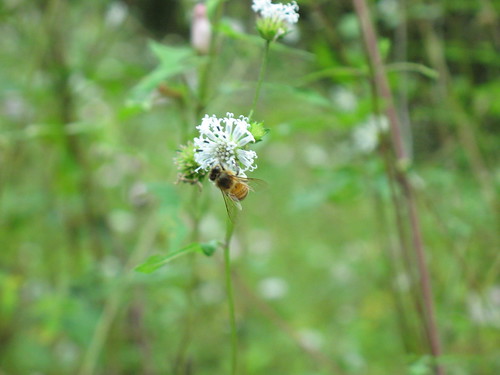
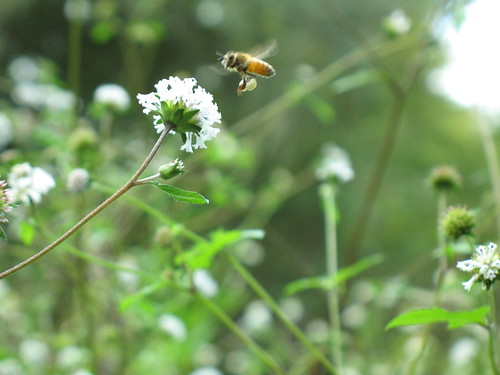
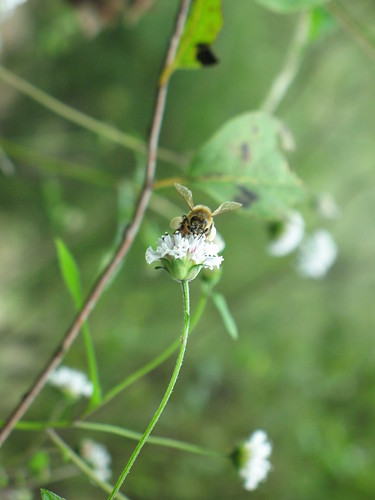
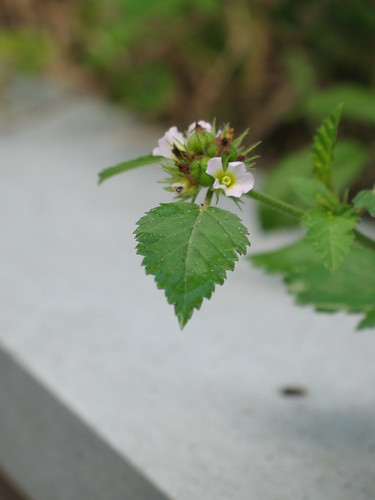
After my walk, I headed out to do my Monday errands. Everyone at the bank wanted to know what happened to my arm (I should have used some of the hilarious comments left yesterday). My Ichetucknee stop was quick and I picked up a new ribbon for my register printer while I was there. Before I headed back to Troy, I stopped in to check on Adams Tract. I checked the water and very slowly, with one hand, swept the only restroom that needed it. I also started working on a plan of attack for Adams Tract grounds maintenance on Wednesday when I have two able bodies to help me.
As I drove back into Troy, I stopped at the barn to see if the little deer was around and to try to photograph more Fritillaries. There were no signs of the little fawn. I did get in touch with someone from FWC though, who I can call if we see it again. He told me that there is a certified wildlife rehabilitator near the park who could care for the deer. I hope that it is doing OK on its own. There weren't as many butterflies today as there were yesterday, but I did find these two who were mating.
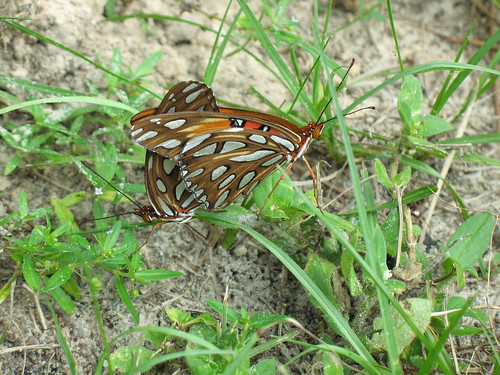
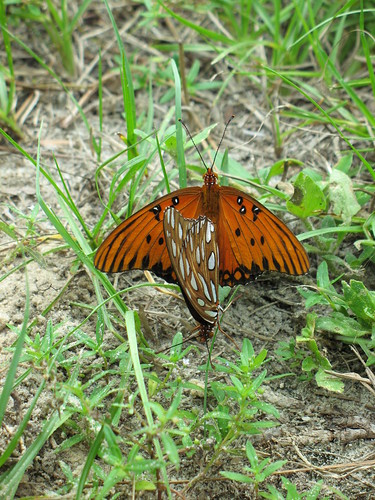
Next I started looking for eggs. They were everywhere! The little yellow specks on the leaves are individual Gulf Fritillary eggs. Most of them were probably laid by the butterflies I saw yesterday.
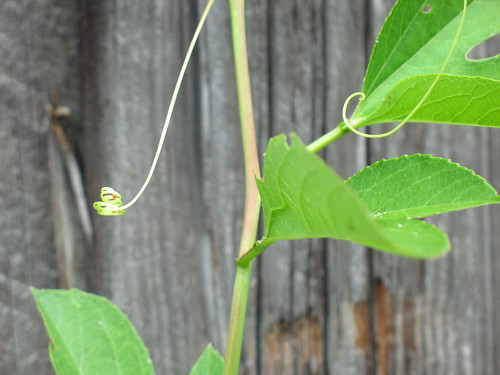
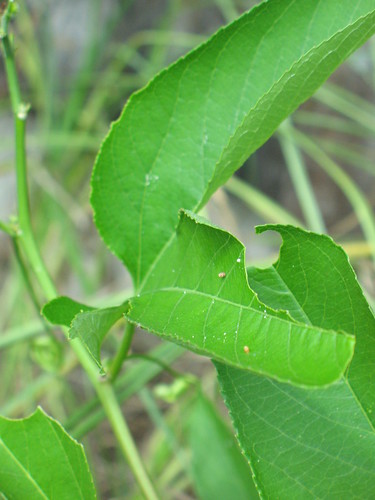
When each egg hatches, a tiny, spiky caterpillar will emerge who will begin feasting on the plant that the egg was deposited on. This type of plant, the Purple Passion Flower is a host plant for Gulf Fritillaries, but not for all types of butterflies. The caterpillar will grow as it eats and shed its skin several times to continue to grow. The last time it sheds, it will climb to a higher, safe place where it will shed to expose its chrysalis. The butterflies that emerges from the crysalis will head a little further south to avoid the winter frost. They will overwinter as adults before returning to start the cycle over again.
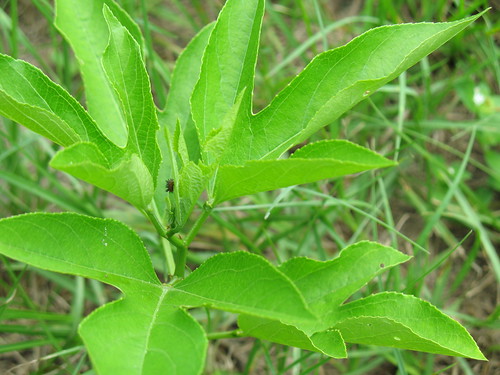
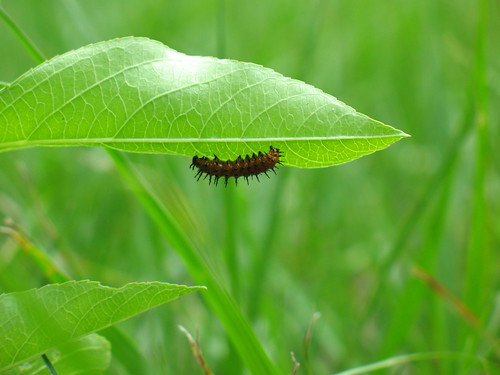
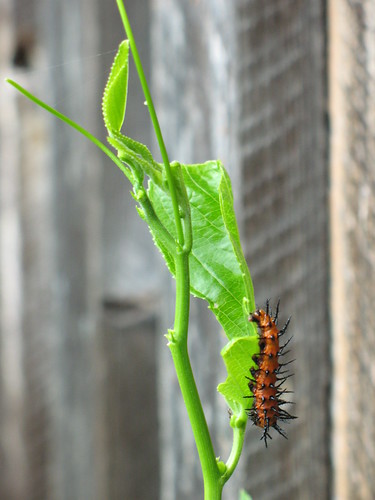
4 comments:
I can imagine your broom technigue, probably using your neck and leg/ hip to help stabalize the broomstick and pulling it toward you... makes for a sore neck, but gets the job doen. I adapted a rake for a gardening adaptive equipment project for school. It looked like a "canadian crutch" I drilled into the the handle, and attached an old drill handle to it, so the hand grip is parallel to the wooden handle/ rod. Then I took a leather belt and drilled it above the hand grip so that I could but my arm through the belt then grab the hand grip. I was able to get the leverage needed to rack leaves or hoe a garden. Might be worth adapting a broom for yourself. Im guessing you will have a push/ pull weight limit for a while. I think I have it in the shed still/ Ill send a picture.
I've been showing these great bee shots to my coworkers kids and they think its awesome. The skink having a cricket dinner got a great reaction as well.
Thanks for this little article, I spotted a few of this type of caterpillar on passion flower vines at Paynes Prairie recently and wondered what they would become.
I also recently saw some big green caterpillars with a serious infestation of some sort of white parasitic larvae. There must have been a hundred on the poor thing.
Is there a good caterpillar/butterfly identification book that you know of offhand?
Speaking of hands, I'm sorry to hear you broke your arm, Lorena mentioned it. I'm a Hankie.
Thanks for the comment, Erin. I'm glad that you found my blog to be useful. The butterfly field guide that I use is Butterflies Through Binoculars by Jeffrey Glassberg. I have the Eastern US version. Its a great book and is easy to use for any skill level, but it does not address caterpillars. I don't yet have a good caterpillar book, but the same author does have a book called Caterpillars in the Field. It looks good, but it focuses mainly on butterfly caterpillars with only some mention of moths. There are some field guides out there that try to tackle the adult butterfly as well as the caterpillar, but they are usually the most common species as it would take a very large field guide to cover everything. If you are looking into buying a field guide, I suggest at least looking at the reviews on Amazon.com first. Let other people test drive a title before you spend your money.
Post a Comment